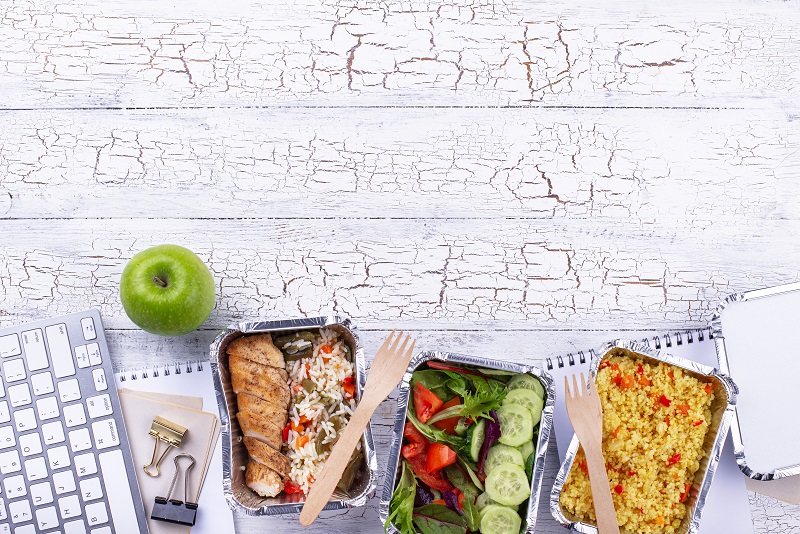
Food experts reveal what you should and shouldn’t do when you want to order from a restaurant, whether it’s delivery or pickup, during the Covid-19 pandemic.
Your life has completely changed as social distancing rules and quarantine takes over our lives, in order to slow the spread of Covid-19. To comply with the new regulations, restaurants have closed their dine-in services, but many are still allowing pickup and delivery. And while it may be tempting to order your favorite food from the restaurant, is it still safe to do so?
Here’s the answer to food safety experts which explain the dos and don’ts of delivery and pickup during Covid-19. It’s important to remember these recommendations can change at any moment. “We are still learning a lot about this virus, so recommendations are based on what is known to date,” says Angela M. Fraser, PhD, professor in the department, food, nutrition, and packaging sciences at Clemson University in Clemson, South Carolina.
Yes, you can order in
The good news is that food experts aren’t skipping take-out. “We patronized our favorite Thai restaurant over the weekend, and I was happy to do so,” says Donald Schaffner, PhD, a distinguished professor and extension specialist in food science with expertise in microbial risk assessment at Rutgers University in New Brunswick, New Jersey.
While there’s still little information, the coronavirus “seems to be about as sensitive to heat as other pathogens in food that can make you ill,” he says. (The World Health Organization recommends making sure your food reaches an internal temperature of 70 degrees C, which is 158 degrees F.)
Although the foods cooked to their proper temperatures should kill the virus, however, more research is still needed to confirm this, adds Schaffner.
Skip the salad
If you want to order take-out, it’s important to choose a meal that’s cooker correctly under the right circumstances. However, you should skip cold dishes.
“I would not eat cold foods that have been prepared by someone who I do not know,” says Fraser. That’s because it’s still unknown how long this novel coronavirus survives on surfaces, she says.
According to a March 2020 letter in The New England Journal of Medicine, the virus has been shown to live on some surfaces for up to two or three days. But when it comes to lettuce leaf it is a totally different story then plastic, but until more is known, you better play it safe and prepare your own salads at home.
When in doubt, do delivery
Social distancing means minimizing the number of people you get in direct contact with, says Fraser. Because of that, she recommends choosing delivery if the restaurant provides that choice.
That said, restaurants are adopting policies to improve the safety of getting your order. For instance, Fraser points out, some will put the order into a box that you pick up from, while others direct you to wait for an employee before entering; the employee will then come to the door and hand you the order, limiting the surfaces and people you run into. Ask them to leave the food at your doorstep and tip over the app for a cashless, touch-free transaction, suggests Schaffner.
Handle the food from package to plate correctly
When you receive your package of food, there are a few things you can do to reduce the risk of infection without going overboard. Fraser says that she’d take the food out of the container and put it on a plate, wash her hands, and then microwave the hot food. If you’re still concerned after following these simple steps, you can use utensils to eat handheld foods, like pizza, says Schaffner.
Therefore, there are a few things you shouldn’t do. Firstly, it’s a waste of resources to use surgical gloves when you bring the package into your house, and doing so takes these supplies away from healthcare workers who need them, he says.
Additionally, there’s no need to spray the packaging with disinfectant before bringing it into your house. In this situation, hand hygiene comes into play. Discard or recycle the packaging as appropriate, wash your hands properly or sanitize them, and you’re good to go.
Don’t be shy about asking questions
During this time of uncertainty, you should feel comfortable calling the restaurant and ask everything you need to know about its best practices. You’ll likely get a positive response.
“Honestly, I think most restaurants are going to do the right thing,” says Fraser. That includes wearing gloves, but they don’t necessarily need to be donning masks, she says.
Restaurants that are open right now for curbside pickup and delivery are counting on an uptick in orders in order to stay afloat, and so ordering food from them is one big thing you can do to support your local economy. However, you should do whatever feels comfortable for you, which may change depending on your personal risk factors.
“If you’re very concerned, do not eat out and only buy food packaged in a manufacturing plant or thoroughly cook all foods before consumption,” says Fraser.











































